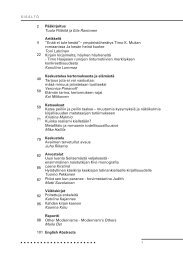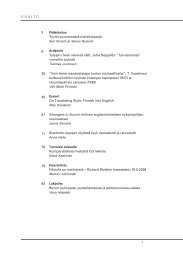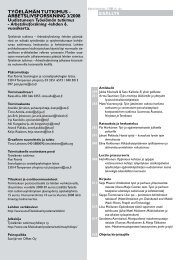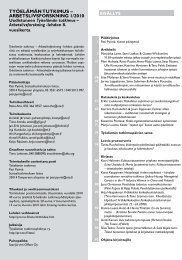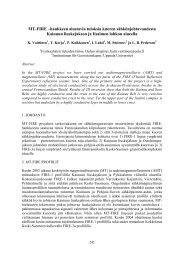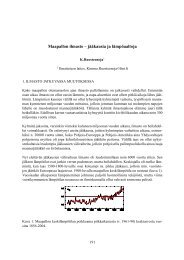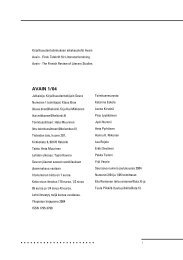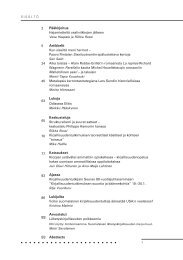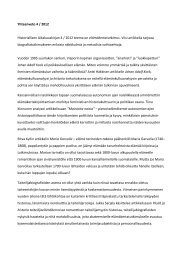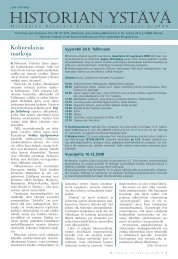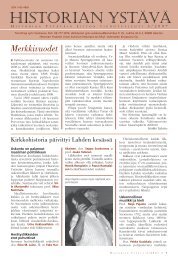Modeling of Martian atmospheric phenomena and atmosphere ...
Modeling of Martian atmospheric phenomena and atmosphere ...
Modeling of Martian atmospheric phenomena and atmosphere ...
You also want an ePaper? Increase the reach of your titles
YUMPU automatically turns print PDFs into web optimized ePapers that Google loves.
Figure 1: A MLAM forecast <strong>of</strong> ground temperature (greyscale; in K) <strong>and</strong> 1.5 m level winds(arrows; in m/s; the arrow below the image denotes 20 m/s) over topography (contours; in mfrom Mars’ lowest elevation) in the VL1 <strong>and</strong> MPF l<strong>and</strong>ing region (the l<strong>and</strong>ing sites are markedwith “VL1” <strong>and</strong> “MPF”). Season is summer solstice (L s = 90 ◦ ) <strong>and</strong> local time is 1100 at 0 ◦ W(0900 at 30 ◦ W — the MPF longitude).5. AEROSOL PROCESSESBesides dust, also ice crystals are frequently observed in the form <strong>of</strong> clouds in the <strong>Martian</strong> <strong>atmosphere</strong>.We have studied their formation processes in <strong>Martian</strong> conditions, <strong>and</strong> compared withobservations <strong>and</strong> previous modelling results. The situation in the <strong>Martian</strong> <strong>atmosphere</strong> differsfrom the terrestrial conditions, since the <strong>atmosphere</strong> is nearly pure CO 2 vapour, which takespart in the processes <strong>of</strong> particle formation (nucleation) <strong>and</strong> subsequent growth. In a near-puresituation nucleation becomes non-isothermal <strong>and</strong> strong coupling <strong>of</strong> fluxes arises in multicomponentcondensation. These effects need to be taken into account in the theories used.We studied homogeneous <strong>and</strong> heterogeneous nucleation <strong>of</strong> CO 2 based on the work by Wood(1999), <strong>and</strong> H 2 O nucleation following the same schemes. We have compared the results to CO 2laboratory measurements (Gl<strong>and</strong>orf et al., 2002). The H 2 O results were compared to those <strong>of</strong>Inada (2002). A more detailed description can be found in Määttänen et al. (2005). On Mars,homogeneous nucleation would require very high saturation ratios (10 8 ). Anyhow, the onsetsaturation ratio (the saturation ratio for nucleation rate <strong>of</strong> 1 s −1 ) <strong>of</strong> heterogeneous nucleation forCO 2 on dust particles <strong>of</strong> 1.0 µm radius is 1.32. This is in fair agreement with measured values(Gl<strong>and</strong>orf et al., 2002). For constant concentration <strong>of</strong> CO 2 it gives a threshold temperature <strong>of</strong>145 K. For water with average concentration <strong>of</strong> 300 ppm the onset saturation ratio would be1.18 <strong>and</strong> the corresponding threshold temperature 200 K (Figure 2).We have modelled nucleation as a function <strong>of</strong> height at different locations, e.g., the MPF l<strong>and</strong>ing226




